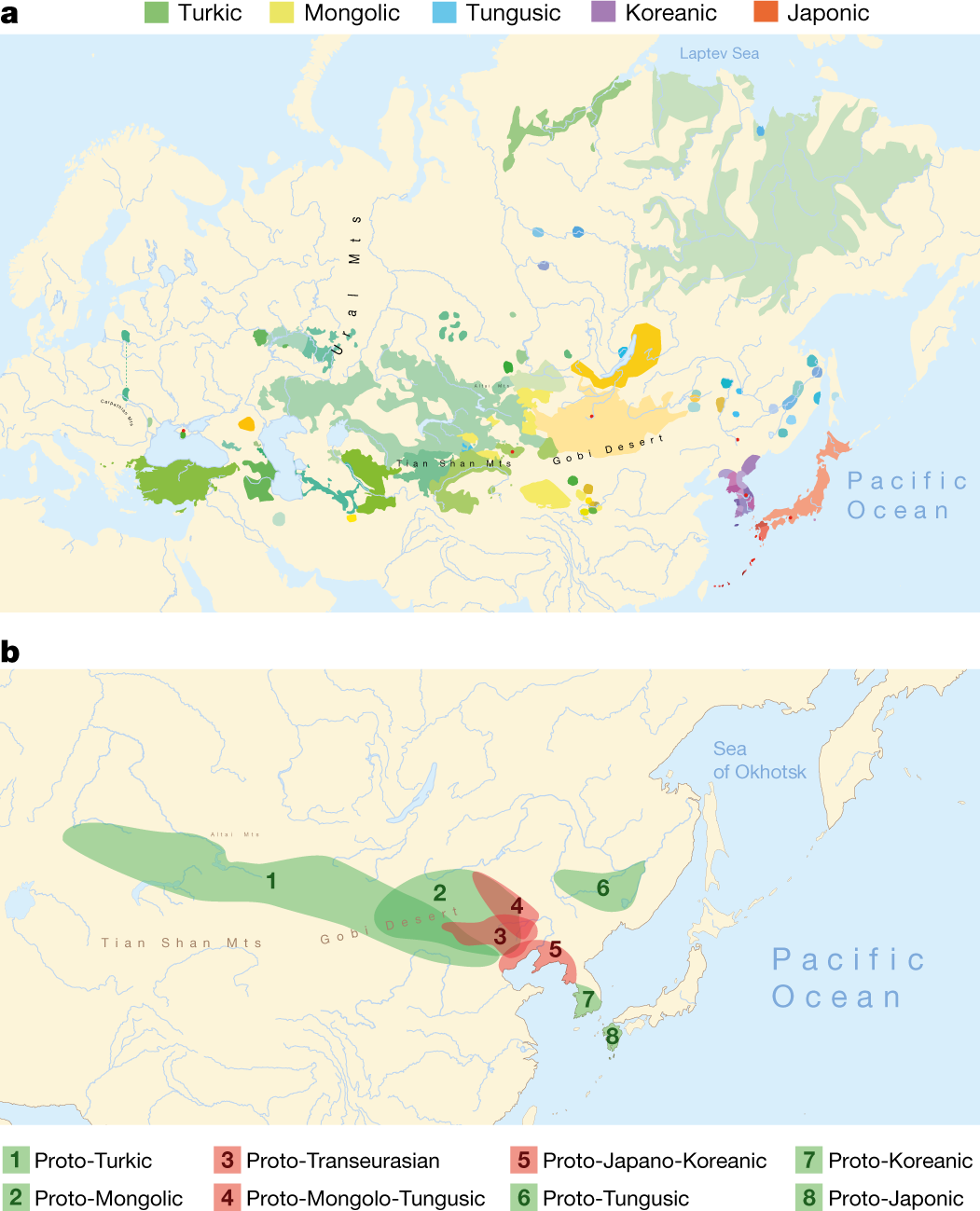If you speak modern Japanese, Korean, Turkish and Mongolian, you have a connection to neolithic millet farmers from the Liao River valley - Inner Mongolia and the provinces of Liaoning and Jilin in China. People speaking nearly 100 dialects and languages across 5,000 miles have a shared genetic ancestry stretching back 9,000 years, the research found.
And farming is the reason. Millet was an important staple that allowed humans to move from primitive hunter-gatherers to civilizations. They added rice and wheat to the millet and migration continued. But as people moved they kept common words for things like "house" and "pig" which allowed the multi-disciplinary team to reverse engineer many current languages.

a, Geographical distribution of the 98 Transeurasian language varieties included in this study. Contemporary languages are represented by coloured surfaces, historical varieties by red dots. For legend, see Extended Data Fig. 1. b, Reconstructed locations of Transeurasian ancestral languages spoken during the Neolithic (red) and the Bronze Age and later (green). For detailed homeland detection, see Supplementary Data 4. The estimated time-depth is based on Bayesian inference presented in Supplementary Data 24. Credit
With that, they also found other common cultural attributes, like burial and pottery. across cultures which today consider themselves distinct. In June of last year another paper linked agriculture and migration. This was obviously common sense, but there is a large distinction between things that make sense or are oral histories and science data.
Genomic analysis, for example, found that a woman's ancient remains from Yokchido in South Ko. They had migrated from the continent to Japan at some point farther back and had later again migrated over the sea.
No matter how distinct we may all feel, a surprising number of us share a common genetic and cultural history. And we can thank farming for making that possible.
Citation: Robbeets, M., Bouckaert, R., Conte, M. et al. Triangulation supports agricultural spread of the Transeurasian languages. Nature (2021). https://doi.org/10.1038/s41586-021-04108-8





Comments